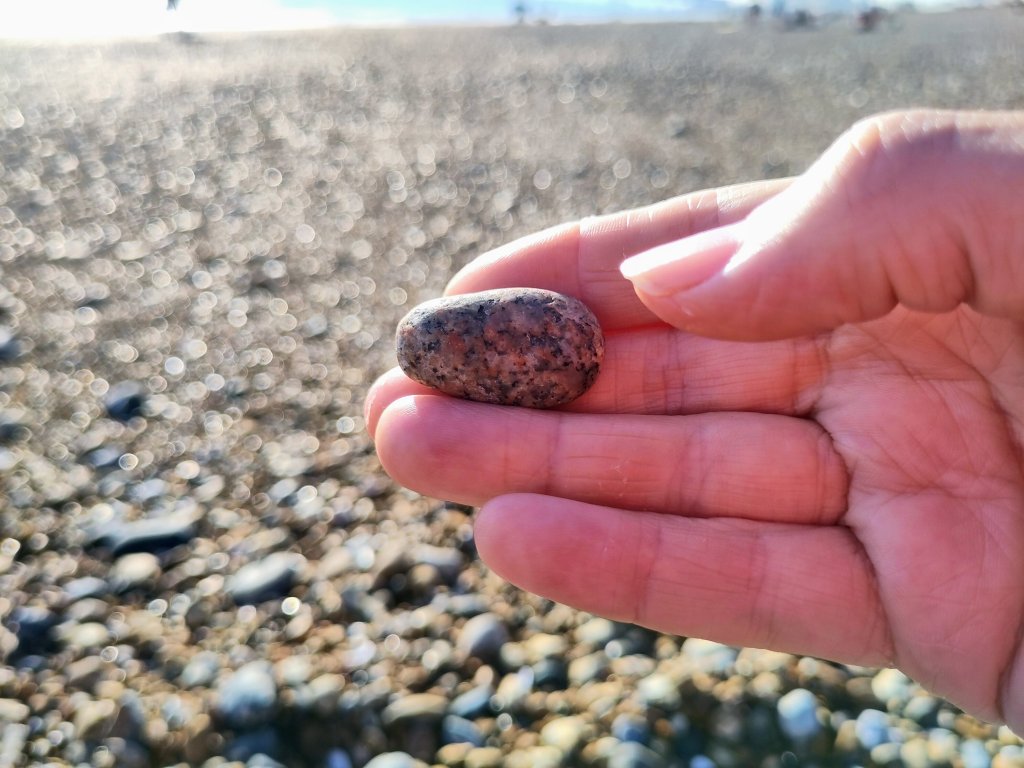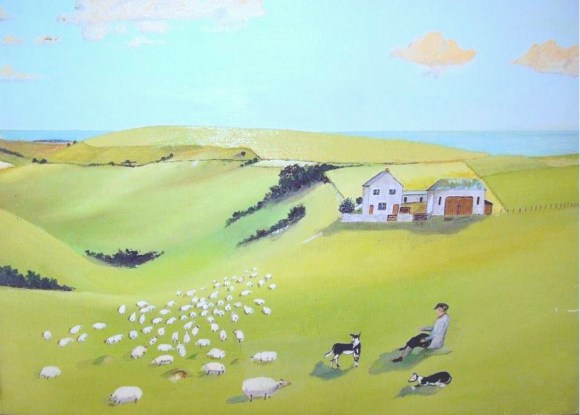
After my previous post about Gaia, I was asked by a friend if I minded getting splinters from sitting on the fence! As usual, I had left it up to my readers to choose for themselves what to think – which is how it ought to be – but without saying what I believe.
The trouble is – I am confused!
You are aware of only one unrest;
Goethe’s Faust Part 1
Oh, never learn to know the other!
Two souls, alas, are dwelling in my breast,
And one is striving to forsake its brother.
Unto the world in grossly loving zest,
With clinging tendrils, one adheres;
The other rises forcibly in quest
Of rarefied ancestral spheres.
If there be spirits in the air
That hold their sway between the earth and sky,
Descend out of the golden vapors there
And sweep me into iridescent life.
Oh, came a magic cloak into my hands
To carry me to distant lands,
I should not trade it for the choicest gown,
Nor for the cloak and garments of the crown.
My first love, certainly that of which I was truly conscious, was earthly materialistic science. I didn’t think of it in those terms though. For me it was a quest to mathematize the world – to seek for the mind of a God in which I did not believe.
At the Bottom of the Glass
The first gulp from the glass of natural sciences will turn you into an atheist, but at the bottom of the glass God is waiting for you.
Carl Friedrich von Weizsäcker (1948)
I am also an idealist, a philosopher, always asking questions. I consider that war and strife are not good things. Like my father, I am a pacifist, and as a young man, a devout atheist.
It was only when I was in my mid-twenties that I discovered the limits to analytical logic. In the mid-1980s I became concerned about the state of the environment. So I would have discussions with people about it – I would blind them with logic, with cold, clear facts and inevitably fail to convince them unless they already agreed with me anyway.
A friend bought me a book about the Indian tree-hugging movement, the chipko andalan, that was inspired by Gandhi. The occasion was my birthday, which I was celebrating in a hammock high in the branches of a beautiful horse chestnut tree in Islington, to prevent the tree from being cut down. Each of us was encouraged to use the name ‘chipko‘ to honour the grassroots Himalayan tree-hugging movement. In 1989 such tree campaigns were few and far between, and had yet to be politicised. We had support from the conservative Daily Telegraph, the liberal Guardian, and the socialist Morning Star newspapers. I think if the campaign was either political and/or angry I might not have been involved.
However, on reading about the Gandhian philosophy behind our non-violent protest, from a cold logical perspective, it made little or no sense. But morally, it felt like the right thing to do. It left me both confused and wanting to find out more.
At the heart of the chipko movement was the Gandhian concept of Satyagraha – the force that comes from truth and love. The idea was not to make enemies of those whose actions you do not agree with. The idea was to befriend them, building trust and respect through honesty, openness, and complete transparency about your plans.
Such methods made complete sense to my heart but not to my head – they just felt right. But since I wholeheartedly believed that feelings should have no place in decision making – it meant that everything I believed up until then was wrong, or at least partly wrong. Instead of winning minds, it was hearts as well as minds that were essential to engaging with other humans. I was left in a very confused state.
Gandhi was a pacifist – like both myself and some others that I knew. I understood that pacifism meant not only turning the other cheek, but also being willing to lay down one’s life for one’s beliefs, without trying to physically stop the other person. It meant the opposite of being a coward. Our instincts are either fight or flight, but complete, active – bravely looking the other in the eye – surrender to whatever the other person may choose to do to you, takes courage. But I didn’t want to die! I didn’t believe in an afterlife – a better place where I might go after death. Heaven is very much a place on Earth, if it exists anywhere, right here, right now, however flawed it may be.
So I taught myself to accept death as part of the cycle of life. To try to give my life meaning by doing the right thing as well as I could. By trying to bringing as much light as I could into the lives of others. Needless to say it is not easy. I don’t want to die, but when it happens I hope to be ready.
Lest We Forget

In part, that is why I volunteered for this history project. Hardly any one of the people we researched were big important figures in history. Most were farm labourers and their families, forgotten by big histories. Yet every single one, in my opinion, is worth remembering. If it wasn’t for them – or people just like them – we wouldn’t have our daily bread.
What do I believe? I believe in people. We can be lovers or murders, workers or shirkers, bosses or labourers. We are none of us perfect. But we all have something, even in the very worst of us, that is worth saving. At least that is what I believe.
We are all part of Nature. And it can be red in tooth and claw. But even the lowest parasite relies on cooperation with other life-forms to survive. We are dancing on a tightrope stretched between competition and cooperation.
If there is a personal God holding our hand, guiding us on our way, I have yet to knowingly meet such a being. I have met and had long discussions with Christians of at least eight different denominations, with Buddhists from at least two denominations, with Muslims, Baháʼí’s, Wikka, Scientologists and others, and they were all wonderful people. Their faith shone from them as they each, over many years, have tried to convert to me. How could I choose? Every one preached that we should be nice to each other.
But none spoke to me any more than any other.
What did speak to me was the holistic scientific methodology of Goethe (especially as interpreted by Henri Bortoft); the philosophical writings of Rudolf Steiner especially his Philosophy of Freedom (though not his theosophical beliefs); and the holistic interpretations of Plato and Aristotle by writers such as Mary Louise Gill and Joe Sachs (who argue that they both had fundamentally the same philosophical beliefs).
Their views are, philosophically speaking, phenomenological and hermeneutical. But to cut a very, very long story short, the consequence of believing in such ideas as a way of engaging with and understanding the world is that, as Thomas Berry put it:
The universe is a communion of subjects, not a collection of objects. The devastation of the planet can be seen as a direct consequence of the loss of this capacity for human presence to and reciprocity with the nonhuman world. This reached its most decisive moment in the seventeenth-century proposal of René Descartes that the universe is composed simply of “mind and mechanism.” In this single stroke, he devitalized the planet and all its living creatures, with the exception of the human.
The thousandfold voices of the natural world [thus] became inaudible to many humans.
Berry, Evening Thoughts, 17-18.
The whole Universe is a communion of subjects – that is what I believe, though I am very hazy about the details – and that includes the little granite pebble I communed with today on Brighton beach.
One reply on “Animate Earth 1: What I Believe”
David, thank you so much for the biographical overview. I found it very interesting and loved the quotations. A sweet painting too. A cliché I know, but what a journey! I shall now always picture you up a horse chestnut tree.
Did you know that Descartes was known to have tortured animals – they being to him mere machines?
But let me not end on that dark note – now I know those pretty pebbles are granite. 🙏🏻 Lee